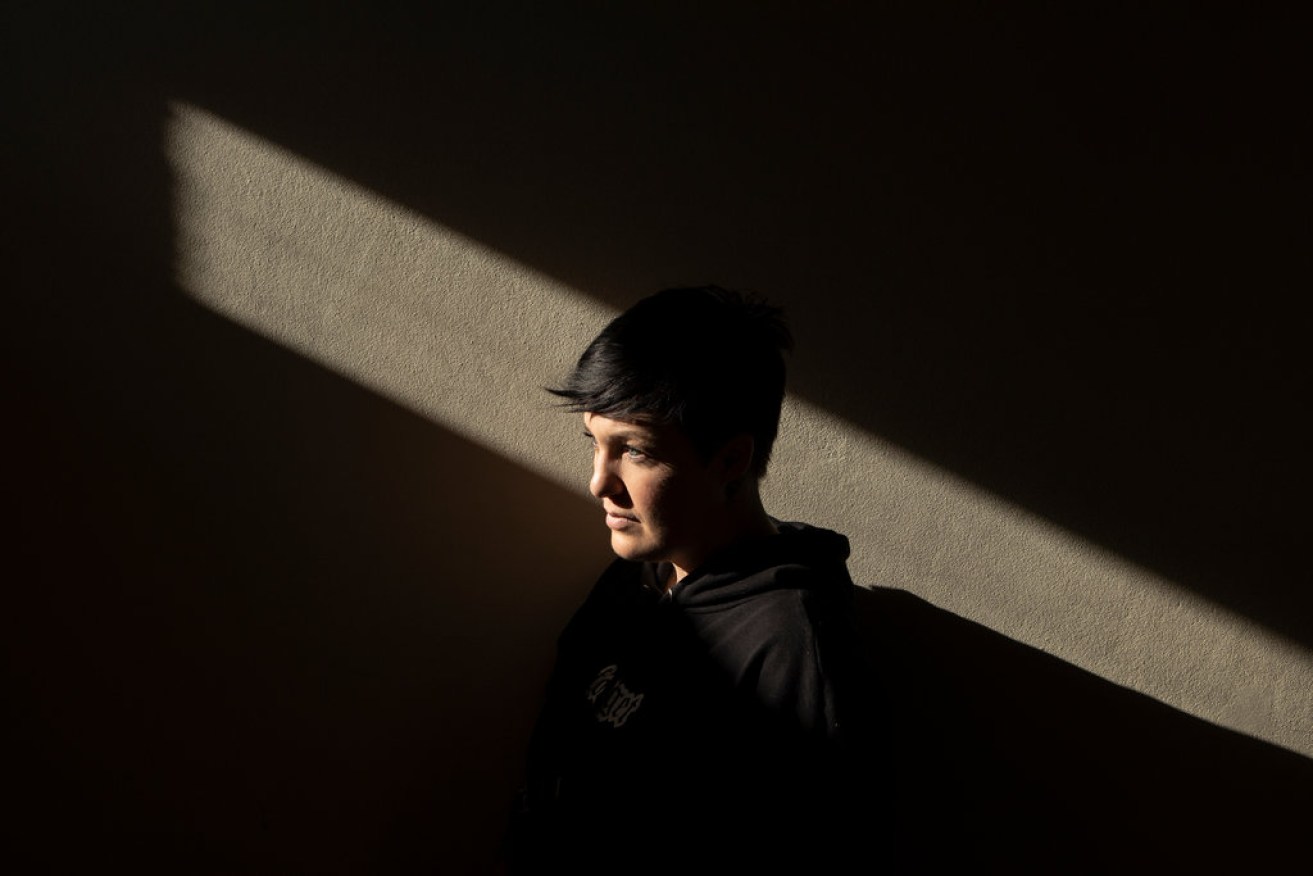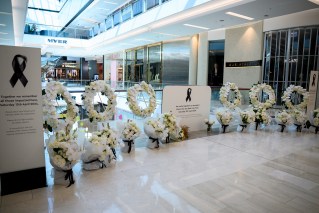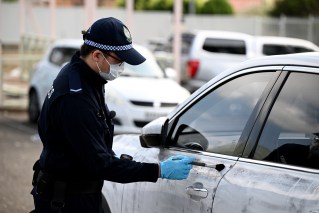For these Australian prisoners, a 14-month wait without being sentenced

Alyson Colquitt was arrested on a drug charge in 2015 and spent more than year in custody before being convicted. David Maurice Smith for The New York Times
When Alyson Colquitt was arrested in 2015 for selling cocaine, she expected jail time. What she did not expect was to spend more than a year in custody waiting to be sentenced, without access to drug rehabilitation or other services.
Ms Colquitt pleaded guilty to selling less than a gram of cocaine to an undercover police officer. Despite being a first-time offender selling to support her drug addiction, she was held in custody for 14 months.
“There were absolutely zero opportunities for rehabilitation for prisoners awaiting sentencing in that prison,” said Ms Colquitt, who ended up overcoming her addiction with no medical support. “I was hallucinating, vomiting, shaking, having nightmares. It was horrible.”
The government of New South Wales, Australia’s most populous state, is not short of money: This year’s budget surplus runs into the billions. But despite its wealth and official promises to “deliver an effective and efficient justice system,” the state’s prisons and courts are overwhelmed with backlogs and sentencing delays that can drift to more than a year for non-violent crimes, often cutting off access to programs that help keep criminals from offending again.

Ms Colquitt at a public rehabilitation centre in Sydney. Photo: David Maurice Smith for The New York Times
The number of prisoners in remand, as Ms Colquitt was — charged with a crime, not granted bail, kept in custody, but not yet found guilty in court — has also increased. So have the wait times for sentencing, according to defence lawyers and Bocsar data.
Don Weatherburn, the director of Bocsar, says Australia’s increasingly aggressive policing is one of the reasons for these changes. “Everyone thought that when the rate of crime went down, the rate of imprisonment would follow,” he said.
Dr Weatherburn pointed to recent New South Wales Police policies like the Suspect Targeting Management Plan as one cause for court delays.
The plan — which police officials have defended in the face of concerns about its impact on Indigenous Australians — focuses on “predictive policing.” It aims to prevent crime by targeting previous offenders with tactics such as strip searches and house calls — sometimes, according to a report by the Australian Youth Justice Coalition, several times a week.
The report criticised this approach as undermining key objectives of the NSW youth criminal justice system, including diversion, rehabilitation and therapeutic justice.

The prison population of NSW jumped from less than 10,000 people in 2012 to almost 14,000 in 2018. Photo: David Maurice Smith for The New York Times
According to Dr Weatherburn and others, the courts just can’t keep up with the influx of cases, which has caused sentencing delays and other problems.
In an attempt to ease the backlog, the state government introduced laws this year to encourage the accused to plead guilty early in the process, avoiding lengthy trials.
The 2018-2019 operating budget for the “justice cluster” also increased to $8.8 billion from $8.3 billion the year before.
But several lawyers who work in the criminal justice system said that the reforms and increase would be inadequate given the backlog of cases in the District Court, which handles the overwhelming majority of contested criminal trials and which the president of the state’s Bar Association, Arthur Moses, has previously described as “close to breaking point”.
Phillip Boulton, former president of the Criminal Defence Lawyers Association in NSW, said many victims of the overcrowded judicial system were remand prisoners with addiction problems.
These prisoners had “very few positive opportunities for any kind of rehabilitation if they are refused bail and not yet sentenced,” Mr Boulton said. He added that by the time they are sentenced, they often had little time left to serve, making them ineligible to participate in drug and alcohol programs for sentenced prisoners.
That was the case for Ms Colquitt, who was sentenced to time served plus two weeks.
A report from the Audit Office of New South Wales last year found that Corrective Services, a division of the state’s Department of Justice, was not providing eligible prisoners with programs in a timely manner to reduce their risk of reoffending.
The auditors found that in 2015-2016, 75 per cent of Australian prisoners who needed rehabilitation programs had not participated in one by their earliest release date.
A spokeswoman for Corrective Services said it offered remand prisoners a flexible 20-session program that helped participants better understand their addiction, though she acknowledged the program was offered in only about a third of the state’s 38 correctional facilities.
She added that other support groups, including Alcoholics Anonymous and Narcotics Anonymous, might be available for some prisoners awaiting sentencing.
But several inmates, who among them have spent time in 11 correctional facilities, reported that treatment programs in the prisons were either unavailable or limited for remand prisoners.
Ms Colquitt said her attempts to organise a 12-step alcohol and substance abuse recovery group while she was incarcerated were met with resistance from corrective officers. Groups of prisoners were not allowed to organise in case they might be planning a riot, she said.
Corrective Services acknowledged there were practical difficulties in offering rehabilitation to remand prisoners, because they are often shuffled between correctional centres, or moved away from centres for long periods while attending court.
One inmate who was advised by his lawyer to remain anonymous to avoid repercussions from Corrective Services, said he had been moved nine times during his 15 months in remand, and that these disruptions had come when he most needed help to fight methamphetamine addiction.
“The anxiety is crazy,” the inmate said. “I know jail is supposed to be a punishment, but if we want to put our hands out for help, there is nothing there.”
Corrective Services said those in custody who had yet to appear for sentencing might shy away from admitting their addiction problems and seeking help in prison for fear it could result in harsher sentences.
But those who are granted bail have an advantage: While they’re waiting, they can show their capacity for rehabilitation by attending 12-step programs or submitting to regular drug tests, which often leads to a lesser sentence.
For those on remand, leniency is harder to obtain: Limited access to rehabilitation often worsens their sentencing outcomes.
“They are the people that the tabloids say deserve to be locked up,” said Sharyn Hall, another criminal defence lawyer. “But we have to remember that we are dealing with real people who are getting out one day.”
For people like Ms Colquitt, the justice system in NSW tends to look more like an obstacle to getting back on track than an aid.
She managed to do it on her own. More than a year after she was released, Ms Colquitt is celebrating two and a half years of sobriety, thanks, she says, to the staff of Kathleen York House, a public rehabilitation centre in Sydney’s inner west.
She now volunteers at the centre, running an art group for women recovering from long-term addiction.
She said she believed many inmates could achieve the same recovery if given the opportunity and support in a safe environment.
”Not every time, but sometimes,” she said. “If you give these girls a chance, they will really surprise you.”








